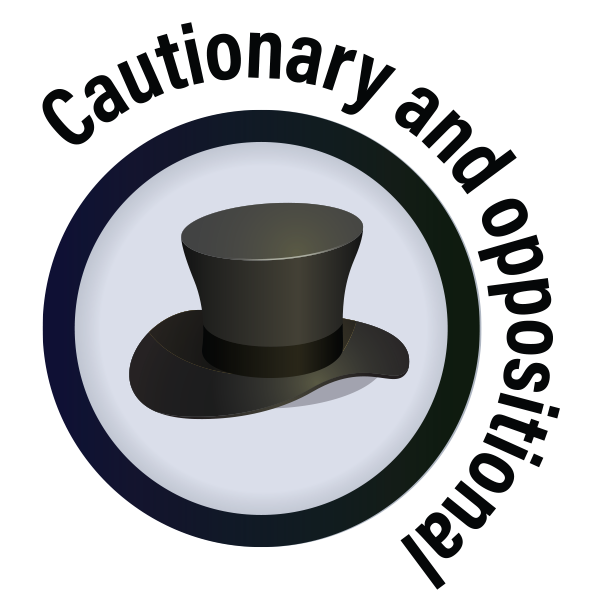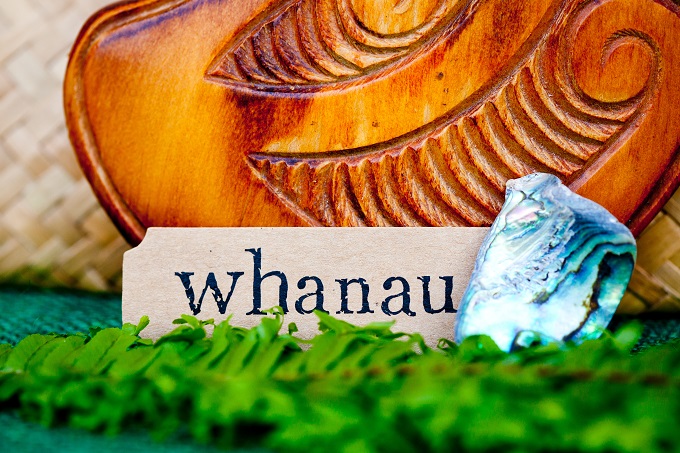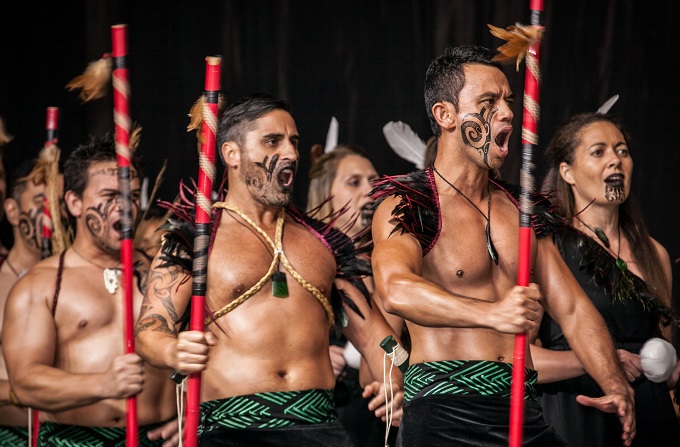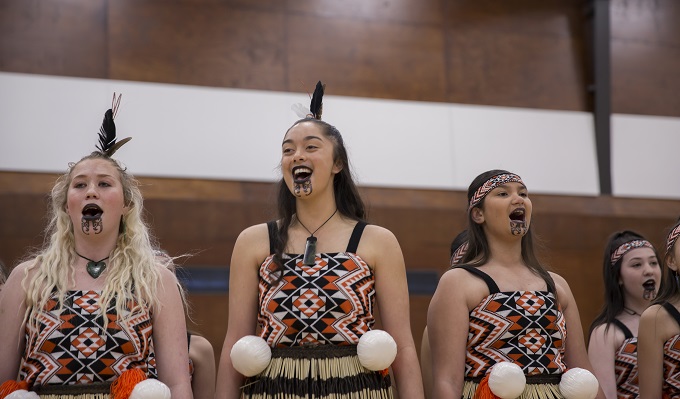Mispronunciation, poor grammar and difficulties with tikanga: Arguments against compulsory learning

Continuing to discuss compulsory te reo Māori through the framework of de Bono’s hats, Alice Patrick delves into the failure of compulsory Gaelic and what low levels of proficiency among English-speaking teachers really means.
 Pōtae pango i.e. negativity. What opposition is there? What are the difficulties/risks?
Pōtae pango i.e. negativity. What opposition is there? What are the difficulties/risks?
Wales and Ireland are examples of countries that have instigated the compulsory learning of Welsh and Irish respectively, as part of revitalisation efforts. However, these models are not readily transportable to the New Zealand context, because Māori language is representative of a minority group. That is, ethnicity is a factor – which is not the case in Wales nor Ireland.
The leader of the ACT party, David Seymour, describes as a failure the attempts to revitalise the Irish language (Gaelige) by making it compulsory in schools. In his words[1]: “They’ve had compulsory Gaelic for 90 years. It’s turned Gaelic into… the Brussels sprout of languages in Ireland. People ‘eat’ it only because they’re forced to – and it makes them resent it.”
The issue of proprietary rights is an argument raised by some Māori people who are opposed to compulsory Māori language in schools, which they regard as a form of cultural appropriation. They want the language to be reserved for Māori – because it is their cultural heritage and they are the ones who will genuinely value it.
Some Māori people have reservations about mispronunciation, poor grammar and difficulties with tikanga if all teachers (no matter how well-intentioned) are compelled to teach te reo. Furthermore, some Māori people believe it is a waste of resourcing to provide opportunities for non-Māori to learn the indigenous language – because they will not have the same investment as someone whose heritage language it is. They would, therefore, prefer the money to be allocated to whānau and community members learning te reo.
There are Māori parents who are advocates of te reo Māori being compulsory in schools – yet they are remiss at home, reverting to English. This means that the education system takes all the responsibility for the revitalisation of the language, which is not ideal. There is no long-term vision or policy to embed compulsory Māori language in schools.
There is a shortage of Māori language teachers i.e. supply issues. And the current reality is that, generally, there are low levels of Māori language proficiency amongst most English medium school teachers. The NMSSA research (2016) found that primary teachers were only able to provide basic Māori language tuition – such that students were familiar with some words (colours, numbers, body parts, and pōwhiri); knew some waiata; and could respond to some questions, greetings and classroom commands. The researchers recommended that: “Increasing the number of teachers who speak te reo Māori, and the level at which they can speak it and use it with their students, should be a priority.”
There are high profile dissenters around the prospect of compulsory Māori language in schools – like Former MP for the National party and ACT party Don Brash and journalist Mike Hosking. They publicly air their views about the lack of value and relevance of te reo Māori for most New Zealanders. Brash would prefer to see the teaching of Mandarin due to its commercial value in terms of New Zealand-Asia trade. He believes that the only use for Māori language is in tourism. Hosking believes that people don’t want to bother with te reo – and that compulsion is never a good reason to do something.
The latter view is supported by the former Minister of Education, Hon Hekia Parata, a speaker and a supporter of Māori language. She described compulsion as the ‘antithesis of motivation’.
Other dissenting voices simply describe the notion of compulsory Māori language in schools as politically-correct nonsense, bringing no good for anyone. They fear that adding Māori as a compulsory subject will detract from other core subjects like Science, English and Maths – subjects that are highly valued by future employers. Most English medium teachers are unfamiliar with a Māori world view, where te reo and tikanga are so important. This makes it hard for them to impart to students. The expectation that teachers will teach Māori language compulsorily may deter prospective applicants from entering the teaching profession – or it may make current teachers leave the profession, because of the added pressure of teaching Māori language in an already crowded curriculum.
Too often, students are exposed to the same repertoire of basic Māori language every year, irrespective of class level. That is, there is no language progression across the school. To this end, the NMSSA report recommended that it was, “… important to keep raising the level at which te reo Māori is taught in English medium schools”. To exacerbate the situation, there are few teaching materials to support the teaching and learning of te reo Māori in schools, and there are few PLD opportunities targeted to this area.
Making Māori compulsory in primary schools would require a lot of government expenditure to:
- increase the Māori language proficiency of teachers and pre-service trainees in the English medium sector;
- develop quality materials, suitable for the teaching of Māori in English medium settings; and
- provide ongoing professional development to help teachers maximise materials and facilitate interactive learning opportunities
 Pōtae kowhai i.e. positivity. What are the benefits/strengths/advantages?
Pōtae kowhai i.e. positivity. What are the benefits/strengths/advantages?
Māori language is easier to learn than most other languages. The orthography is simple i.e. five vowels, eight consonants and two digraphs (ng and wh). And, because it is a phonetic language, pronunciation is easier than English – which is plagued with homonyms e.g. air/heir; ball/bawl; adds/adze; write/right. Māori grammar is also simpler than English. For example, there are no verb conjugations to indicate tense – unlike English e.g. run, running, ran. And there are no noun declensions to indicate plural – unlike English e.g. dog/dogs; baby/babies; beach/beaches.
Instigating compulsory reo sends a positive message about the value placed on the indigenous language of this country.
Respondents to an online survey conducted by Te Ipukarea[2] (at AUT) suggested strong support (among Māori and Pākehā[3]) for compulsory Māori language in primary schools. Moreover, both Māori and Pākehā respondents[4] thought that Māori language was important because of its association with New Zealand national identity. However, it should be noted that the 5391 respondents were users of the online Māori dictionary e.g. students, researchers and Māori language speakers/learners. As such, it is likely that they were already invested in Māori language. Consequently, this finding cannot be generalised to the wider New Zealand population.
Research suggests that there are potential benefits for hauora/health. Medical researcher, Hine Elder, asserts that “New Zealanders being bilingual in te reo and English could have a powerful impact on improving quality of life in the older years, by delaying the onset of dementia”. Her claims are based on international evidence published in the 2012 Dementia Report.
There are other benefits too, for Māori and non-Māori students; namely:
- sense of national identity;
- enhanced linguistic ability;
- knowledge of another culture/worldview, with another set of values;
- broader career opportunities;
- cognitive challenge and the development of neural pathways;
- enhanced ability to socialise in different contexts; and
- appreciation of identity and the value of diversity.
Making Māori language compulsory in primary schools would help to increase New Zealand students’ understanding of New Zealand history (including the Treaty) – so that they become more informed about New Zealand citizenship.
Through increased exposure to Māori language, students would grow up to correctly pronounce Māori place names and people’s names, instead of the violations or outright avoidances evident today; for example, pronouncing Paekākāriki as Piecock; Karepa St as Creeper St; Heretaunga as Herrytonga – or avoiding the correct pronunciation of the All Black, Te Toiroa Tahuriorangi, by referring to him as Triple T.
Data from tertiary institutions indicates that there is unprecedented demand for Māori language tuition from adults (including teachers) – and the demand is increasing every year. For example, AUT is reportedly swamped with enrolments, such that they have created waiting lists. Similarly, Te Wānanga o Aotearoa in Wellington reports that their classes are full until September 2019. And Community Education in Wellington has a waiting list of over 300 people – even though they are running ten Level I courses this year. According to these institutions, the demand is coming from all sections of New Zealand society.
Many learners are Pākehā (often in government jobs). Some are immigrants (open and keen to embrace the indigenous language of their new country). Such demand would seem to run counter to some people’s thinking that Māori language has no application today. In fact, it suggests that, increasingly, New Zealanders are showing they value the language.
Māori language is becoming more visible in the media – which may have contributed to the aforementioned demand for Māori language classes. Examples include journalists Jack Tame on Breakfast TV and Guyon Espiner on Radio New Zealand. In the main, people in the media are endeavouring to correctly pronounce Māori place names in weather reports and Māori people’s names in news broadcasts.
 Pōtae kahurangi i.e. reflection and synthesis. What next? What are our plans for action?
Pōtae kahurangi i.e. reflection and synthesis. What next? What are our plans for action?
Because this kaupapa directly affects classroom practice, especially in Years 1-8, teachers and leaders could consider facilitating some discussion around the issue of compulsory reo Māori (using de Bono’s hats or another technique to draw out different viewpoints).
Questions to consider could be:
How important is it for teachers/students/whānau to learn Māori? Why (not)?
Are teachers using the Māori language curriculum guidelines provided by the Ministry i.e. Te Aho Arataki Marau? Why (not)?
What type of PLD do teachers need?
What materials are needed?
How can we work this aspect of our teaching into performance appraisal – to enhance accountability?
Do you believe that Māori language should be compulsory in primary schools? To what extent do the benefits (Yellow Hat thinking) outweigh the risks (Black Hat thinking)?
Final comment
As the grandmother of Māori mokopuna, to whom I speak in te reo, I’m obviously very keen for Māori language to be compulsory in our schools. The prospect of the next generation being exposed to the language at school, far more than my sons were, excites me.
However, I acknowledge that a lot of work needs to be done prior – in terms of putting things in place to equip teachers with targeted PLD and quality materials. There is a long way to go.
I’m also acutely aware that, being non-Māori, I must respect the right of Māori to exercise their tino rangatiratanga and determine the best way forward to revitalise their language e.g. making decisions about how best to allocate resourcing; and how to ensure the quality and status of te reo Māori remains intact. He taonga i tuku iho, he whakakai marihi – nō reira manaakitia.
[1] As described in the research findings of an online survey by Ipukarea, the National Māori Language Institute at Auckland University of Technology
[2] The National Māori Language Institute at Auckland University of Technology
[3] 83% and 80% respectively
[4] 95% and 94% respectively










The international baccalaureate requires students to learn another language through each of their programmes that run from the primary, intermediate and college. This is an international programme but there are also schools in Australia, America and New Zealand who uses this curriculum. Things are getting better though and i think eventually it will be taught in schools but there just isnt the infrastructure to support it to be done effectively and efficiently.